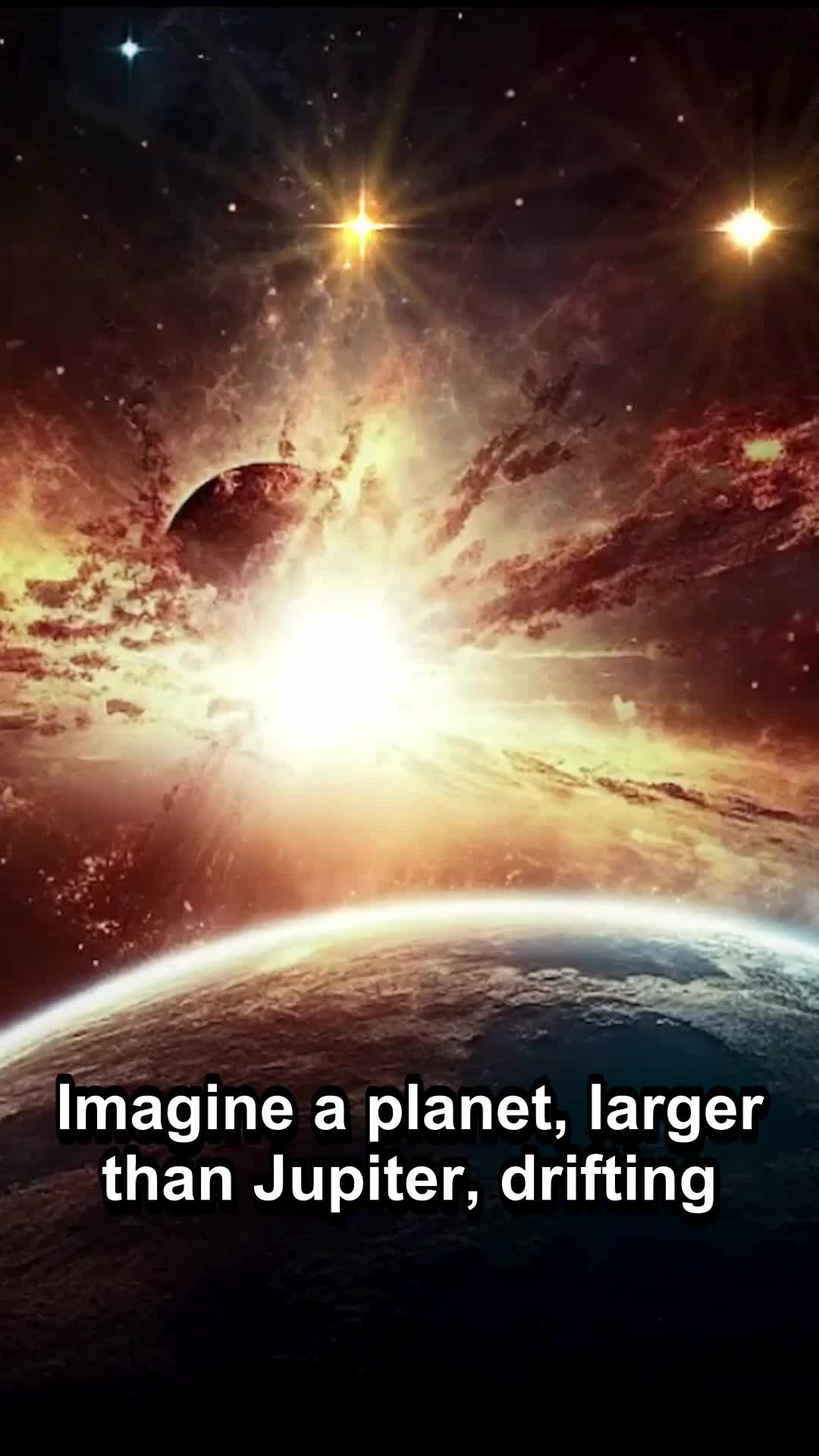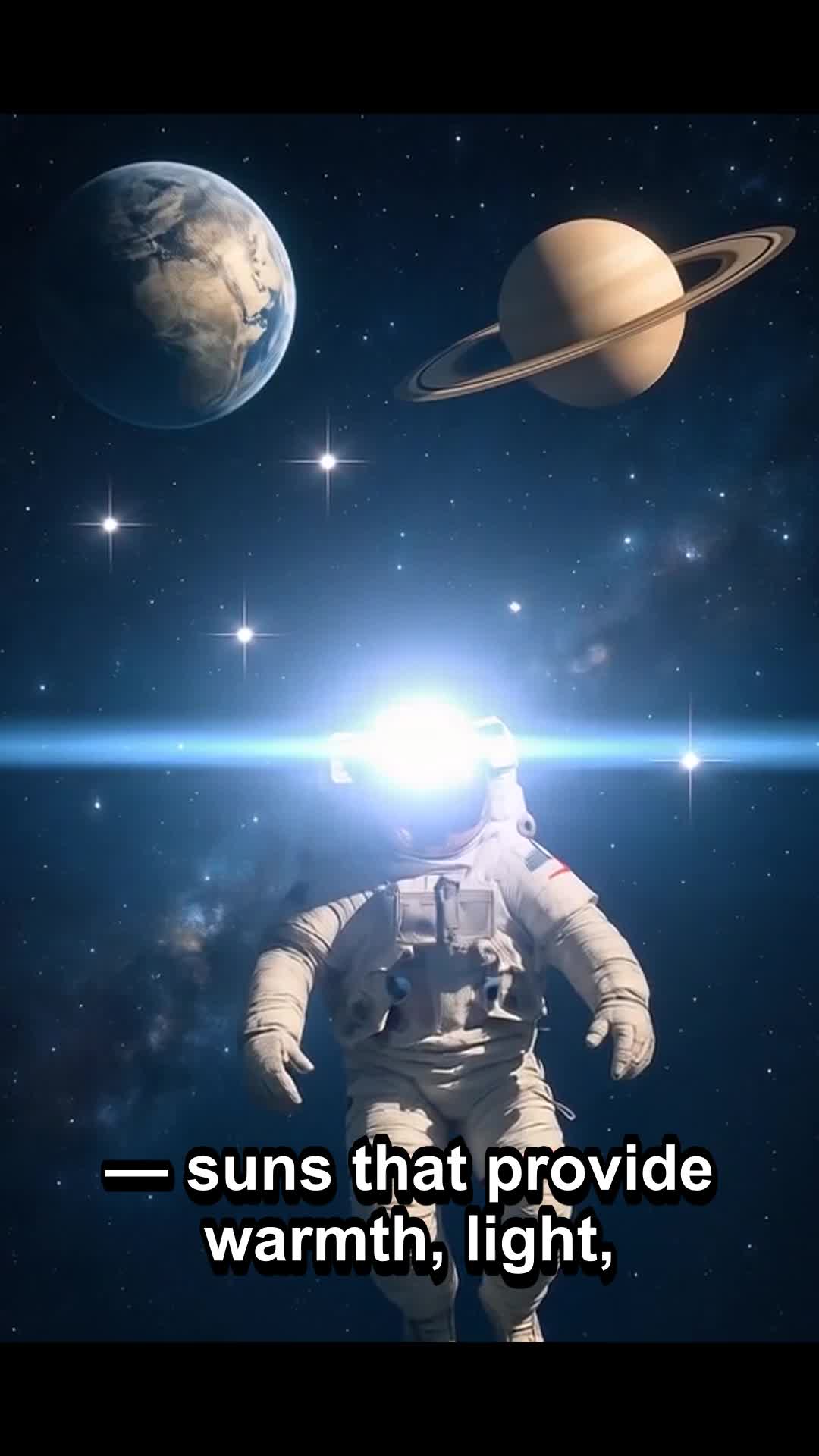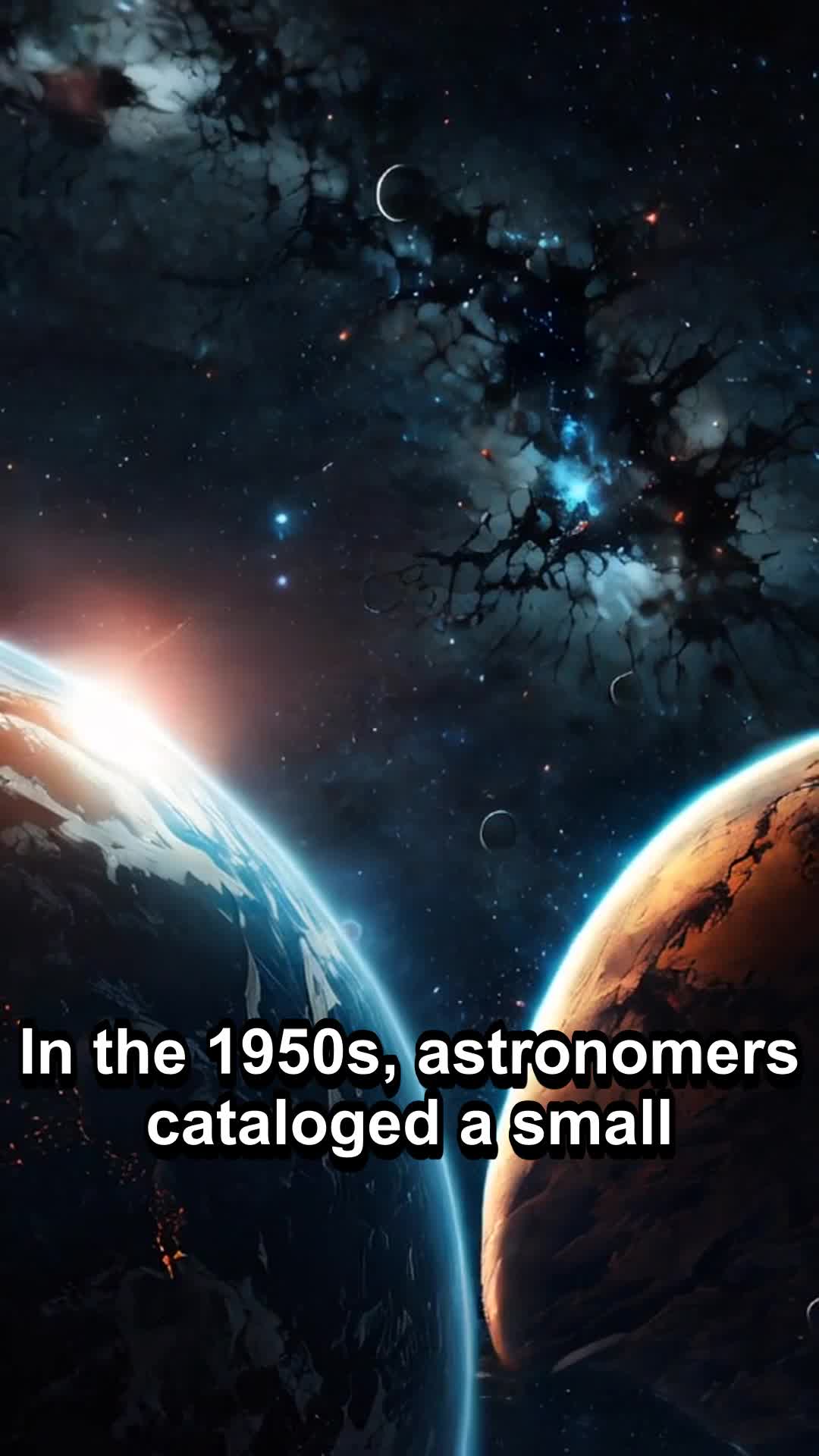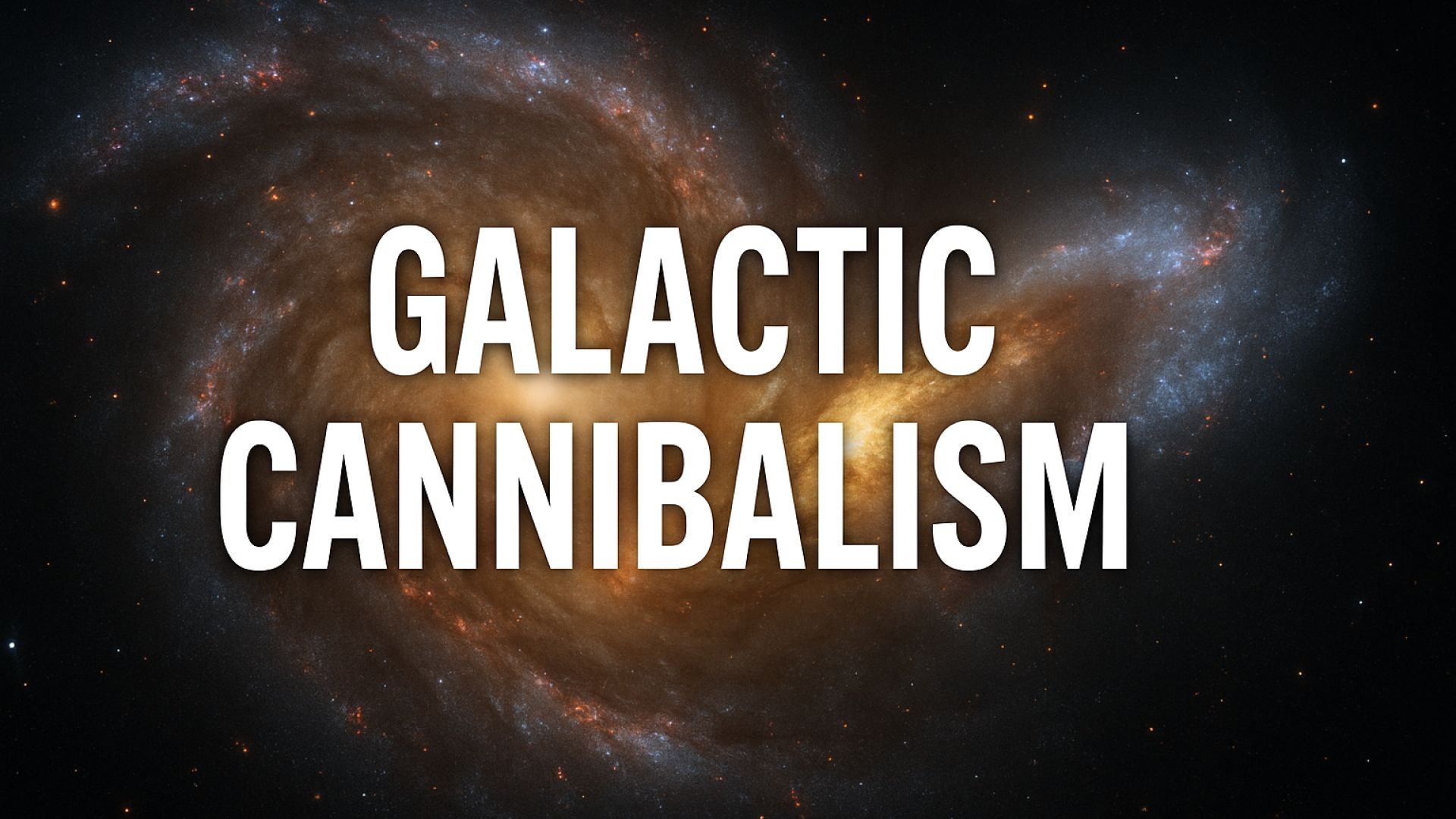Top videos
In the vast cosmos, not all planets are bound to the gravitational pull of a star. Some wander through the galaxy as rogue planets, and this video delves into the intriguing world of these celestial nomads. "A Planet That Floats in Space Without a Star" explores the fascinating concept of rogue planets, celestial bodies that do not orbit a star but instead drift through the galaxy independently. We start by defining what rogue planets are and how they come into existence. Typically, these planets are believed to have been ejected from their original solar systems during the early stages of planetary formation. The forces involved in their ejection and the dynamics of these free-floating entities are discussed in detail, using high-definition animations and expert interviews. The video further explores the implications of these wandering planets on theories of planetary formation and survival. How do these planets maintain their atmospheres? What potential do they hold for hosting life? Theories suggesting that under certain conditions, rogue planets could harbor subsurface oceans kept warm by radioactive decay or residual heat from formation are examined. In addition, the documentary touches on how astronomers detect these elusive planets despite their lack of a starry backdrop. Techniques like gravitational microlensing, where the light from a distant star is momentarily focused by the gravity of a rogue planet passing between the star and Earth, are clearly explained with visual aids. The narrative also considers the future of space exploration and the role that rogue planets could play in understanding the universe's broader ecological systems. Could these planets serve as pit stops for interstellar travel? What resources might they offer? These questions are pondered with insights from leading astrophysicists and planetary scientists. Finally, the video looks ahead to upcoming missions and technologies that may provide more clues about the nature and prevalence of rogue planets. With captivating visuals and thought-provoking commentary, "A Planet That Floats in Space Without a Star" invites viewers to consider the complexities and wonders of our universe in a new light.
In the vast expanse of space, a groundbreaking discovery has been made: a planet orbiting a dead star, known scientifically as a white dwarf. This video dives deep into the implications and scientific marvel of this finding, offering viewers an unprecedented look at one of space's most intriguing phenomena. The documentary-style video begins with an introduction to white dwarfs, the remnants of stars that have exhausted their nuclear fuel and shed their outer layers. We explore how these stars, once like our own sun, transform into dense, cooling orbs about the size of Earth. From there, the focus shifts to the recently discovered planet. This celestial body, defying previous expectations, orbits its white dwarf at a remarkably close distance, surviving the star's dramatic death throes. The video explains the significance of this survival, highlighting how it challenges existing theories about planetary system development and decay. Astrophysicists and planetary scientists provide expert commentary throughout the video, discussing the methods used to detect such planets and the potential for finding more. They delve into the technologies, like the transit method and gravitational lensing, that have made these observations possible. Moreover, the video addresses the big questions this discovery raises about the future of our own solar system and others. What happens to planets as their stars age and die? Could life find a way to endure on planets orbiting dead stars? Theoretical models and simulations provide insights into these questions, suggesting scenarios where life might adapt to extreme and changing conditions. In addition to scientific analysis, the video offers stunning visualizations of the white dwarf and its planet, based on the latest astronomical data and artist's interpretations. These visuals not only help viewers understand the scale and nature of these cosmic bodies but also enhance the awe-inspiring beauty of the universe. As the video concludes, it invites viewers to ponder the resilience of planetary systems and the endless mysteries awaiting discovery in the cosmos. Whether you're a seasoned astronomer or a curious newcomer, this video will deepen your appreciation for the dynamic and ever-evolving universe.
In this captivating video, we delve into the perplexing and unprecedented phenomenon of a galaxy that seemingly vanished from the night sky. Our journey begins with an overview of the initial observations made by astronomers using powerful telescopes stationed around the globe. These initial findings set the scientific community abuzz with theories and speculations. The video then explores the various hypotheses proposed by leading astrophysicists to explain this cosmic mystery. One theory suggests that the galaxy may have been obscured by a massive interstellar dust cloud, effectively hiding it from view. Another possibility discussed is gravitational lensing, where the light from the galaxy is bent and redirected by the gravitational force of an intervening cosmic body, making the galaxy appear to vanish. We also examine the role of dark matter in this phenomenon. The video includes animations that illustrate how this invisible matter could potentially envelop and isolate a galaxy, cutting it off from the rest of the universe. Furthermore, interviews with experts provide insights into how this disappearance could impact our understanding of the universe’s structure and the future of galaxy observation. In addition to expert commentary, the video features stunning visualizations of the galaxy before its disappearance, alongside simulations of the aforementioned theories that might explain this enigma. These visuals not only enhance the viewer's understanding but also add a dramatic effect to the storytelling. The latter part of the video discusses the technological advancements in telescopes and observation techniques that could help solve this mystery. It also speculates on what the discovery or explanation of such a disappearance could mean for future astronomical studies and for our understanding of the universe as a whole. Join us as we explore this intriguing cosmic mystery, the science behind it, and the profound questions it raises about our universe. Whether you are a seasoned astronomer or a curious enthusiast, this video is sure to provide you with a wealth of information and stimulate your curiosity about the cosmos.
Galaxies are often pictured as serene islands of stars adrift in a calm universe. But the truth is far more brutal. The cosmos is a battleground, and the Milky Way — our home galaxy — is a predator.
Right now, it’s devouring a smaller, fragile companion: the Sagittarius Dwarf Galaxy. Slowly, Sagittarius is being torn apart, its stars ripped into long streams that weave around the Milky Way like threads of a ghostly tapestry.
But this is not a rare event. Our galaxy has built much of its enormous size by consuming others. Over billions of years, it has swallowed dozens of smaller galaxies, leaving behind faint rivers of stars — silent evidence of past cosmic feasts. The very halo that surrounds the Milky Way is littered with the remnants of ancient victims. When you look up at the night sky, many of the stars you see could once have belonged to another galaxy entirely, now stripped of their past and reborn as part of our own.
Yet the story doesn’t end there. In about four billion years, the Milky Way will face a far greater force: the
Andromeda Galaxy. Drawn together by mutual gravity, these two giants will collide in a spectacular event, shredding and reshaping both galaxies into a new, larger creation. For all its history of conquest, the Milky Way is ultimately just another player in the universe’s endless cycle of destruction and rebirth.
Galactic cannibalism is not a rare exception — it’s the rule. Growth demands sacrifice. Existence demands dominance. In the grand theatre of the cosmos, every galaxy is both creator and destroyer. And we are living witnesses, riding the swirling edge of a predator that, one day, will be consumed itself.




